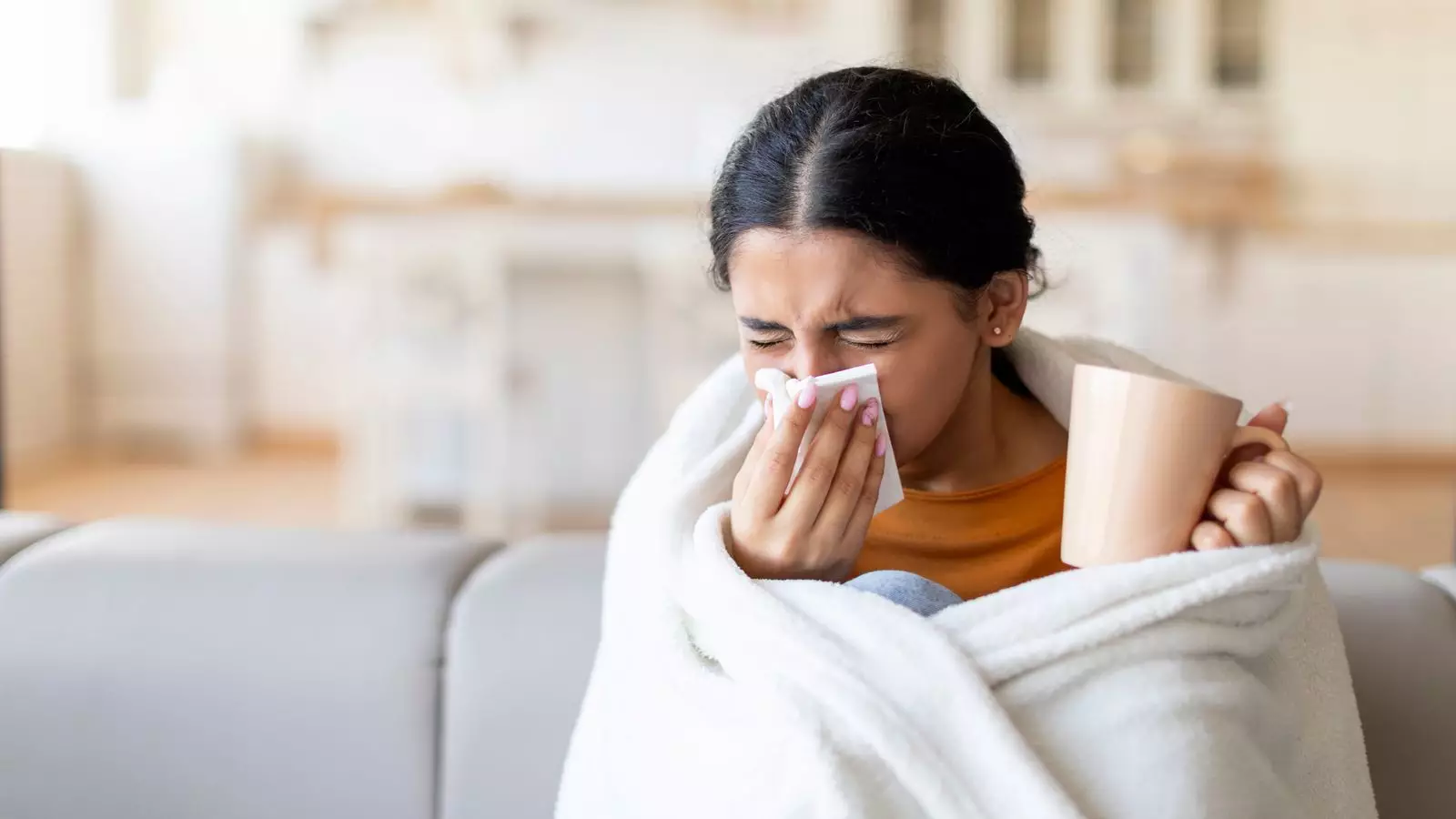The UK is grappling with an alarming spike in flu infections, described by health officials as a “tidal wave” that has dramatically surged hospital admissions. The NHS reports an unprecedented 70% increase in hospital cases within the span of just a week, with approximately 1,861 patients being treated daily compared to just 1,099 the week prior. As winter progresses, these figures underline the significant challenges facing the healthcare system, with a particularly troubling trend noted among school-aged children.
Current data from the UK Health Security Agency highlights that flu cases are predominately affecting children aged 5 to 14, though trends suggest that adult cases may follow as educational institutions break for the holidays. The season has additionally seen a marked increase in instances of norovirus—commonly known as the winter vomiting bug—and RSV, a virus known for causing respiratory issues in infants. Reports indicate an average of 837 hospital beds occupied by norovirus patients last week, marking a 10% rise from previous figures, while children hospitalized for RSV have risen to 152 daily.
This concurrent rise in multiple viral infections has sparked concerns among health officials about a potential “quad-demic.” Dr. David Lloyd has articulated the fears associated with this phenomenon, which incorporates four prevalent viral illnesses that typically exhibit varying peaks throughout the winter months. Such an unprecedented mix could exert immense pressure on health resources, particularly as families gather indoors during holiday festivities—an environment ripe for the spread of viruses.
In light of this troubling trend, health authorities are emphasizing the critical importance of vaccination. The NHS has made strides in promoting flu, COVID-19, and RSV vaccines, with free flu vaccinations being offered to vulnerable populations, including individuals over 65, pregnant women, and others with specific health conditions. Convenient access points for vaccinations have been established in various locations, even traditional holiday settings like Christmas markets and popular community venues like football clubs.
Professor Sir Stephen Powis, the NHS England chief, has underscored the urgency of attending vaccination appointments to safeguard public health and alleviate the pressure on the NHS system. As the festive season approaches, the prospect of “festive flu” looms large, prompting health officials to appeal to the public for proactive measures against potential illness.
Compounding the challenging situation, November has been recorded as the busiest month for Accident & Emergency (A&E) departments in England, with over 2.31 million attendances. However, this spike in demand for emergency care comes with its own set of difficulties: the proportion of patients treated within the recommended four-hour window has diminished, dipping from 58.1% in October to a worrying 57%. For ambulance services, delays have become more commonplace, with an average handover time now stretching almost 43 minutes—substantially longer than last year’s figures.
Despite these pressures, there is some positive news regarding elective care. The waiting list for treatments has experienced a slight reduction, which analysts view as a hopeful trend. However, the burden of prolonged wait times for serious medical conditions remains a tedious issue that health professionals are attempting to address amidst the rising tide of seasonal illnesses.
The confluence of rising flu cases, norovirus, RSV, and lingering impacts of COVID-19 paints a concerning picture for public health this winter. In this landscape, proactive health measures, such as vaccinations, are crucial for protecting not just oneself, but the wider community. As the winter season unfolds, awareness of illness and responsive healthcare measures will remain of paramount importance, demanding concerted efforts from both individuals and health systems to mitigate the looming threat of a quad-demic. It is an urgent reminder that during times of heightened health risks, the community’s collaborative action can significantly influence the outcomes for public health and safety.



Leave a Reply